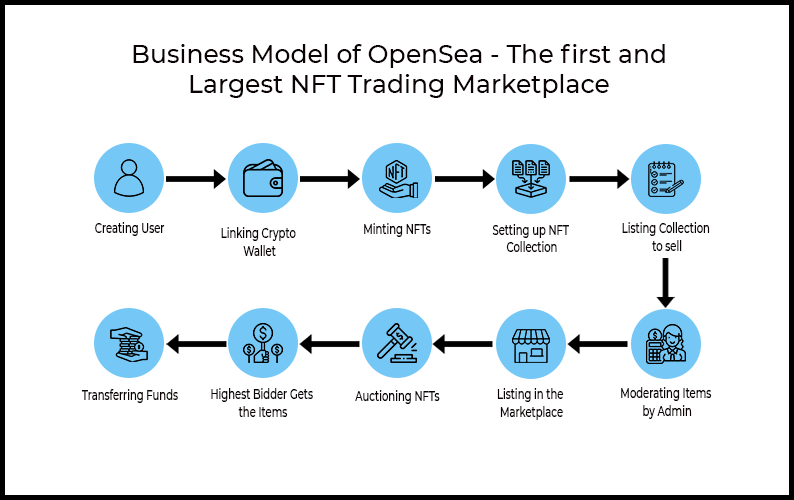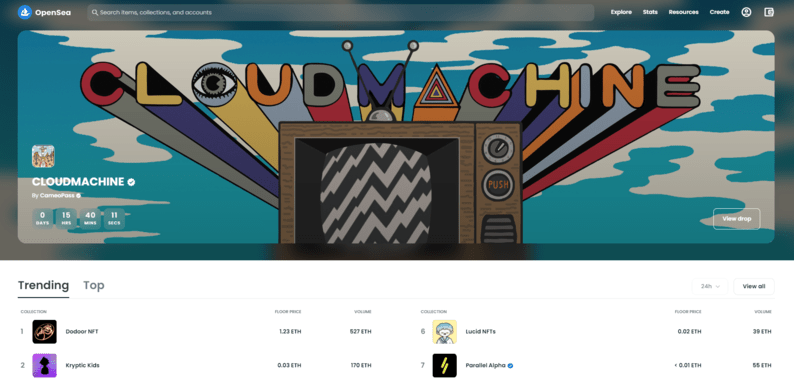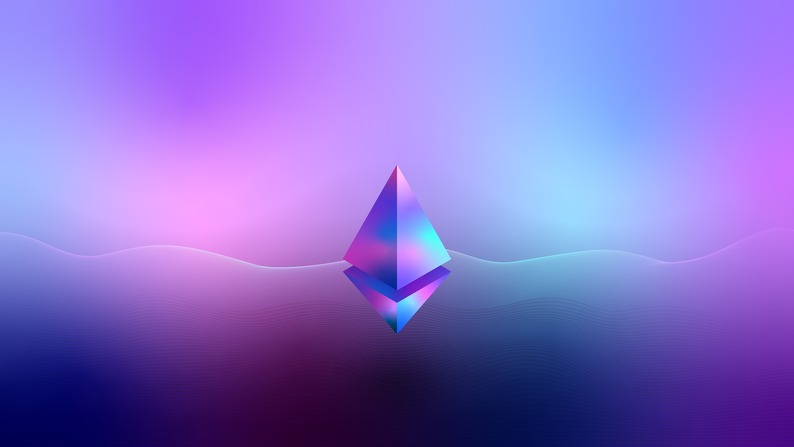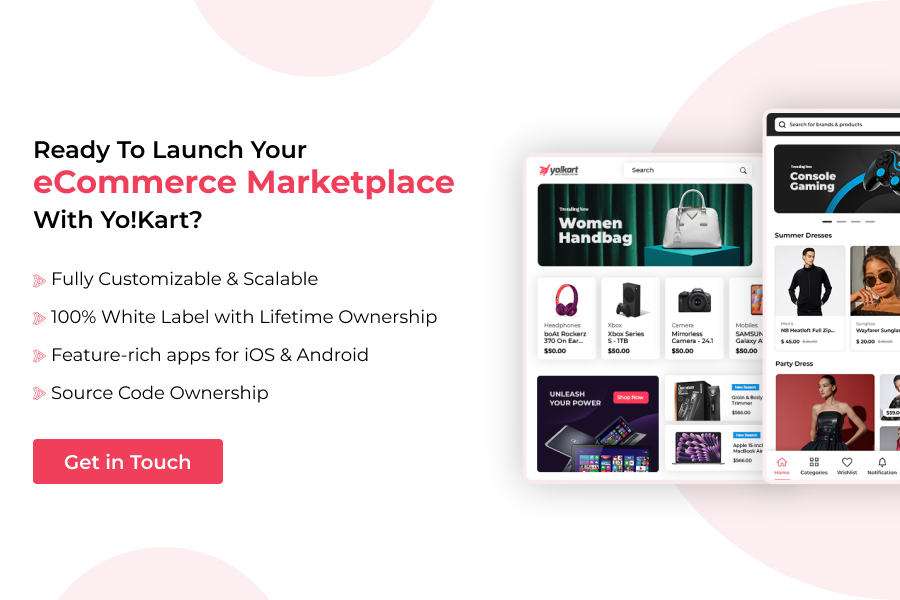Last Updated: 25 November, 2022
The trade of Non-Fungible Tokens or NFTs amounted to US $24.9 billion in 2021 (According to DappRadar) compared to US $ 95 million in 2020. This effectively means, the trade volume spiraled by 262 times in a year. The future holds a similar promise. According to Technavio, in the period of 2021-26, the NFT space is projected to grow by US $147.24 bn with a CAGR of 35.27%.

Source: Technavio
These are significant numbers that emphasize the popularity of NFTs and the sheer economic importance they hold for the present – and the coming future. And sprinting ahead, a pioneer of the NFT revolution is the Peer-to-Peer marketplace OpenSea.
In this blog, let’s discuss how to build an NFT marketplace like OpenSea in less than a month, by employing a versatile turnkey solution and Agile customization services.
Table Of Contents:
NFT – How do They Work
As an entrepreneur, the technology behind NFTs may not affect you directly. You can skip to the next section. Still, if you are interested in the intricacies that make the NFT mechanism work, or want to familiarize yourself with the jargon – we briefly discuss the technology behind NFTs in simpler terms.
NFT is based on Ethereum blockchain technology. Essentially, they are a unique unit of data stored using blockchain technology on a digital ledger. This data establishes proof of ownership and other transactional details regarding the crypto asset.
The crypto asset or the digital file is converted into a blockchain-based NFT by a process called minting. Minting usually entails a fee, also known as “gas”. Once minting is done, it is not possible to edit, modify or delete the file.
The minted NFT represents the linked asset, and that asset only. It can further be used for trading. The minting process also includes the creation of a “Smart Contract”. These are digital sale agreements related to the trade of NFT. Technically, smart contracts are self-executing programs that contain the contents of the agreement inscribed by computer code. These store all transactional and ownership details regarding the minted NFT.
NFT – Reasons for the Hype
In most scenarios, the reason behind a new trend gaining traction is some value for the consumers. And the primary underlying value of NFTs is that they are unique, secure, and decentralized. These virtues are the wheels of the NFT juggernaut.
NFTs can be associated with art collectibles, music, gaming, event tickets, charity, distinct digital video clips, internet memes, virtual fashion, and other digital media – turning them into crypto assets for the owners. These can be auctioned by the creators and traded further if the owner chooses to. They also log details such as date of creation, transaction dates, owners’ information, and other information regarding the asset.
Additionally, NFTs are also finding applications in sectors like Real-Estate, wherein they can be used to record data regarding the use and sale of a tangible asset in the real world – property. Thus an NFT can be linked to a digital or a real asset. Moreover, the blockchain technology behind NFTs is, according to IBM, non-hackable. Thus, these are Inherently secure, assuring authenticity and non-duplicity. But, perhaps their biggest draw is that they are truly decentralized and can be shared over a peer-to-peer platform. And unlike, physical products, NFTs are digital and can be transferred instantly. This facilitates instant liquidity for the sellers and instantaneous ownership for the buyers. For these reasons, users have the trust to invest large sums of money. And this is where NFT trading marketplaces like OpenSea come into the picture.
Suggested Read: Non-Fungible Tokens (NFTs): Meaning, Misconceptions & Marketplaces
OpenSea – Riding the NFT Wave
OpenSea is the pioneer of this crypto niche. It is the first and largest NFT trading marketplace. According to DappRadar, the marketplace had a cumulative trading volume of US $12.5 billion in 2021, which is about 88% of the gross NFT trading volume in the year.
Inspired by the possibilities of the interactive game Cyberkitties, founders Devin Finzer and Alex Atallah, launched OpenSea beta in 2017. The marketplace had a slow start initially. In the first two years, it had about just 4000 active users. During this time, Its competitors like Rare bits ceased operations.
But the business started to gain traction in early 2021. Demand spiraled and in July of the same year, the marketplace processed US $350 million in trade volume. OpenSea has successfully received about US $ 427 million in investments in 9 funding rounds. It has the backing of NBA star Kevin Durant and Hollywood actor Ashton Kutcher, among others. Let’s delve further into the business mechanisms and working of OpenSea.
Business Model of OpenSea at Glance

OpenSea is a Peer2Peer marketplace that allows the trade of NFTs from all popular categories. It does not limit to any specific NFT niche. The essence of blockchain-based eCommerce is its decentralized transactions.
OpenSea has leveraged this virtue to provide a non-custodial peer-to-peer experience on its platform. This means that there is no central authority controlling the transactions. Rather, the transactions are facilitated by self-executing smart contracts.
How does OpenSea work for the users
Visitors are free to browse the marketplace. Once they gain interest, they can sign-up at the marketplace by linking their Ethereum wallet. Since it’s a P2P business. Users can sell or buy from the same profile. If they are interested in selling, they can upload their creatives. They can choose to mint NFT for the ones which they want to sell.
Once the creatives are auctioned, the buyers get a chance to bid for them. Alternatively, the sellers can also choose to list their creatives for a fixed price.
Revenue Stream of OpenSea
The primary source of revenue generation is a service fee, upon a successful transaction. The fixed percentage commission amount is 2.5%. Although its competitors go beyond just commissions and earn via other revenue generation channels.
Learn all possible revenue streams in a multivendor marketplace built with Yo!Kart
Additionally, as OpenSea has scaled, it has enhanced its scope of revenue generation via acquisitions. It has acquired Dharma Labs, Gems.xyz, and Atomic Bazaar.
Value proposition of OpenSea
Apart from introducing a fresh concept in the eCommerce industry, that has caused disruption in the space and attracted users to the platform, OpenSea has also executed business strategies well that have propelled them from launching a beta version in 2017 to US $ 13.3 bn evaluation in 2022. Some of these are listed below:
- No Gas fee charged by the marketplace, the charges are from Ethereum providers.
- NFT creators receive royalties on further trade of their creations.
- Intuitive to use marketplace for the prospective buyers – enhancing conversions.
How to Create a Marketplace like OpenSea

Source: Technavio
In the eCommerce space, the NFT boom is gaining traction and holds promise for entrepreneurs or enterprises considering an eCommerce venture. To build a marketplace like OpenSea, the first step would be to analyze the features of the NFT marketplace that have made it successful. Let’s dissect and discern key features of OpenSea
Key features of OpenSea for NFT marketplaces
Some quintessential platform features that have aided the rise of OpenSea are discussed below:
Auction and fixed price functionalities: OpenSea sellers have the option to auction the assets or list them for a fixed price. This allows the marketplace to appeal to a large pool of sellers – both seasoned and newcomers.
Similarly, buyers can bid, place an offer, or buy immediately, depending upon their preference. They can also view important information such as recent bids, and more that aids in purchase decisions.
Conversion-driven features: Customers have access to the purchase history, making the process transparent. Additionally, buyers can favorite NFTs which will be clubbed together and displayed under the favorites tab on the respective buyer profile.
Bundled Purchases: Buyers on the NFT marketplace also have the option to buy collections as a whole and bypass the need to buy each item individually.
Buyers’ access to Sellers’ Profile: Buyers can browse all listings displayed by sellers on their profiles. This feature is based to foster the P2P ecosystem. Buyers who are predilected towards a particular seller’s assets can choose to browse their work exclusively.
Crypto-Wallet integrations: OpenSea is integrated with multiple crypto wallets to make it convenient for buyers and drive higher conversions.
NFT Rankings: OpenSea has successfully created an ecosystem that interests both collectors and investors. The marketplace is built around providing accessibility and functionalities to a wide pool of users. One such feature is NFT Rankings. The list of NFTs according to rankings can be viewed. The rankings are based on the parameters of volumes, floor price, and others.

Source: Opensea
NFT descriptions with uniqueness display: Each NFT has a list of properties with an analytics display of the property’s uniqueness. Percentage values display how many other NFTs share the same trait. After analyzing the requisite features required to build a marketplace like OpenSea, the next step will be building the platform.
How can team Yo!Kart help you to build a marketplace like OpenSea
An NFT marketplace can always be coded from a scratch. But, this would need resources and time. Alternatively, a turnkey solution can be used. In the current scenario, NFT is relatively a new niche in eCommerce, so a turnkey marketplace solution will need customizations.
Yo!Kart – Customizable turnkey marketplace solution
The versatile eCommerce marketplace software – Yo!Kart provides businesses with the ideal platform for entrepreneurs considering to launch an NFT marketplace.
Here’s why…
Yo!Kart is the engine driving success for over 5000 eCommerce marketplaces worldwide.The leading turnkey solution has all eCommerce essentials covered. Some of these are:
- UI/UX that has delivered results: An empathy-driven UI/UX for customers to SignUp, browse, select, and buy seamlessly.
- Result-oriented features covering eCommerce essentials: Yo!Kart has segment-leading features. Purpose-built to wase eCommerce workflows for the admin, sellers, and buyers.
- Pre-integrations to ease eCommerce Multiple business APIs and 20+ payment gateways have been pre-integrated with Yo!Kart out-of-the-box.
Explore all features Yo!Kart offers out-of-the-box
- Team Yo!Kart support: One of the most significant forces behind the success of Yo!Kart is the support of an in-house Agile team for end-to-end eCommerce customizations and after-sales support.
Customizing Yo!Kart to launch an NFT marketplace

Source: Scnsoft
The customizable turnkey marketplace solution – Yo!Kart, provides a platform with eCommerce essentials. As mentioned above, some customizations will be needed with the software. For NFTs to be hosted on the platform, integration with token protocol is imperative. The protocols are generated on an Ethereum blockchain. That is how the NFTs will be minted. Additionally, to host cross-chain transactions on the marketplace platform, integrations will be needed further. All integration support is provided by team Yo!Kart under customization services that integrate the APIs of the aforementioned services, to build an NFT marketplace.
Final thoughts – Cashing in on the NFT Opportunity
The NFT boom has taken the eCommerce industry by storm. Marketplaces like OpenSea have led by the front boasting significant numbers that quantify the trend. One of the main attractions of the NFT niche is that it is still relatively new. Moreover, the core offering in an NFT marketplace is a digital product, so the platform is not bound by logistical constraints. Thus NFT marketplaces can operate easily across borders, subject to regulations.
Although, OpenSea, like Amazon in the online retail space, has found initial success without narrowing down to any NFT sub-category. Entrepreneurs considering the NFT eCommerce space can analyze the market in the eCommerce industry and plan accordingly. The marketplace can be launched just like OpenSea which caters to all categories or narrows down further by focusing on specific NFT sub-categories. Focusing on sub-NFT niches can still potentially churn revenue for the business.
Some NFT trends that are getting popular are:
NFT gaming: a versatile niche that allows users to trade in-game collectibles. This sub-niche is gaining popularity and is projected to grow in the upcoming future as well.
NFT collectibles: Jack Dorsey, the founder of Twitter sold his first tweet as an NFT for $2.9 million. Collectibles don’t focus on any category, but rather on all categories, leveraging the uniqueness of the NFT on sale.
NFT Fundraising: NFT marketplace represents a truly digital ecosystem, wherein the product are digital as well. So for activities such as fundraising for NGOs, and charities – NFT marketplaces provide a platform for quick results.
NFT Photography: Digital photographs can also be tokenized and auctioned on NFT marketplaces.
NFT music: Music has also started to gain traction on NFT marketplaces. Such marketplaces can leverage NFTs’ P2P ecosystem to allow individual singers to auction their work through the platform.
While these are some of the sub-niches within the NFT trade that are gaining popularity and hold promise for the future as well, NFT marketplaces hold immense potential for these as well as ongoing trends such as digital art.
Yo!kart presents a unique opportunity with a robust and versatile eCommerce marketplace solution and an in-house customization team that offers tailored and high ROI NFT marketplace development.
Witness the multivendor solution in action with free-to-use open demos available for all.




